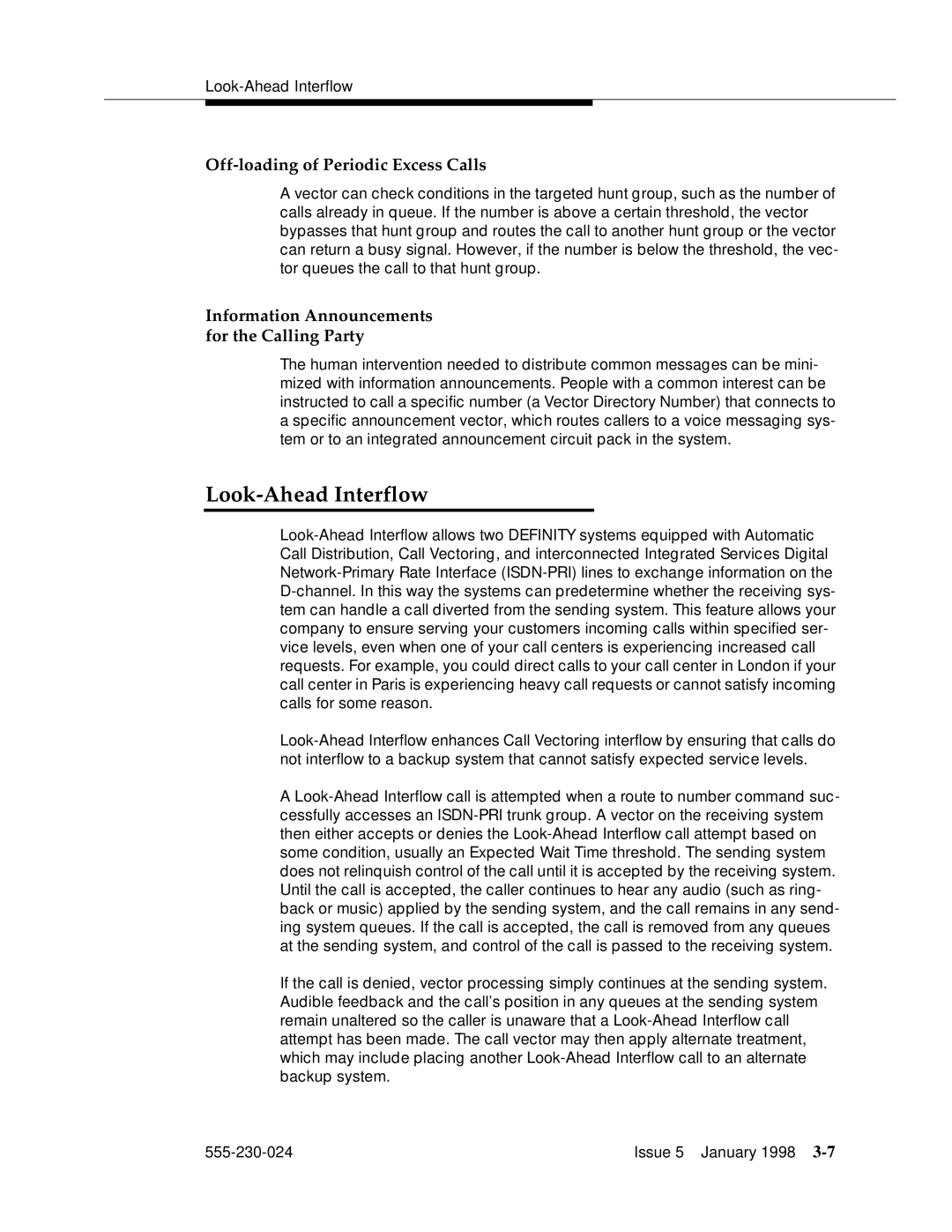
Off-loading of Periodic Excess Calls
A vector can check conditions in the targeted hunt group, such as the number of calls already in queue. If the number is above a certain threshold, the vector bypasses that hunt group and routes the call to another hunt group or the vector can return a busy signal. However, if the number is below the threshold, the vec- tor queues the call to that hunt group.
Information Announcements for the Calling Party
The human intervention needed to distribute common messages can be mini- mized with information announcements. People with a common interest can be instructed to call a specific number (a Vector Directory Number) that connects to a specific announcement vector, which routes callers to a voice messaging sys- tem or to an integrated announcement circuit pack in the system.
Look-Ahead Interflow
A
If the call is denied, vector processing simply continues at the sending system. Audible feedback and the call’s position in any queues at the sending system remain unaltered so the caller is unaware that a
Issue 5 January 1998 |
